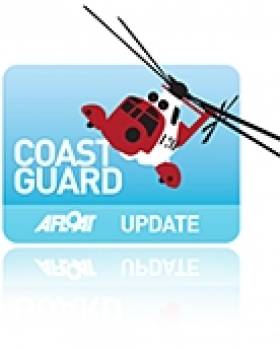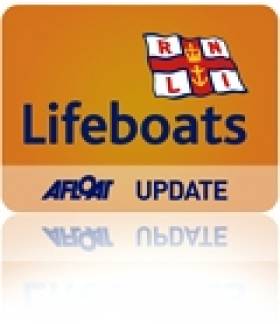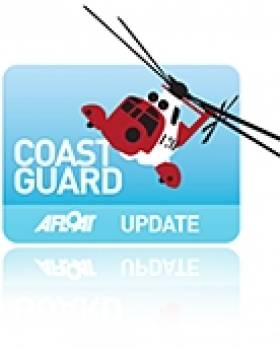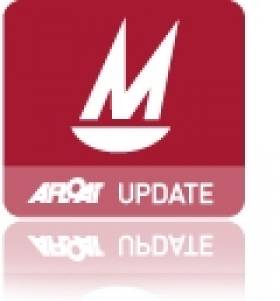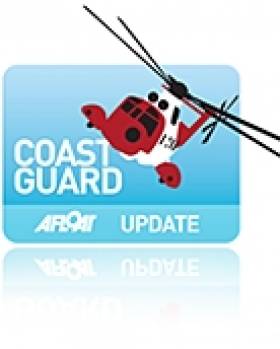Displaying items by tag: Belfast
Boat Jumbles for Dun Laoghaire, Howth and Carrickfergus
If you fancy a rummage through a Bosun's locker then boat Jumble sales on three consecutive weekends and at three separate locations will satisfy all bargain hunters when the Irish boating season kicks off in a fortnight's time.
Each show is offering a range of boating, sailing and water sports equipment and accessories. There are new and used pitches and some familiar trade names in addition to second hand boats/dinghies and nautical “car boot” items.
The first opens on March 27th – the weekend when the clocks go forward – and it takes place on the Carlisle Pier in Dun Laoghaire Harbour from 10am to 4pm.
The next is across Dublin Bay when the RNLI stage a boat jumble at Howth Yacht Club on Saturday 2nd April from 10.30am to 1.30pm.
The last show is at Carrickfergus on Belfast Lough and this 'Irish Boat Jumble' is being promoted as the 'biggest' in Ireland. The Antrim show will be on Sunday 10th April starting at 10am.
All are offering economical rates and friends are being encouraged to team up and pool their surplus gear and share the selling task!
Public Meeting in Belfast on Coastguard Modernisation Proposals
The meeting will provide an opportunity for the community around the existing Belfast Maritime Rescue Coordination Centre (MRCC) to hear more about the proposals, ask questions of MCA representatives and air their views.
The meeting at Marine Court Hotel, 18-20 Quay Street, Bangor. BT20 5ED will be independently chaired and begin at 7:30pm. The meeting is expecting to draw to a close by 9:00pm.
The proposals for Coastguard modernisation, together with the consultation documents, can be found on the MCA website at www.mcga.gov.uk and www.dft.gov.uk
Missing 18-Year Old Found After Two Hour Search in Bangor
The call came in at 23.40 from a member of the marina staff after the boy's two friends had told him that all three of them had climbed over the gate into the pier, but that their friend had not come back and they were concerned that he must have fallen into the water.
Belfast Coastguard sent the Bangor Coastguard Rescue Team to begin a search, as well as requesting the launch of the Bangor RNLI lifeboat. Members of the Police, Ambulance and Fire Service are also on scene.
At 01.50, the boy was found hiding in a compartment in the crew accommodation of a fishing vessel near the pier, and the search was stood down.
Belfast Coastguard Watch Manager Alan Pritchard said:
"This group of three boys had been at a birthday party in the town before climbing the gate this evening to access the pier. Incidents such as these remind of us of the dangers of being in proximity to the water when you have been drinking alcohol – be it going swimming, or walking along cliffs or piers. Although on this occasion the boy has been found safe and well, this could easily have been a much more serious incident."
Bangor Lifeboat Reunite Missing Child with Parents
Belfast Coastguard received the initial call for help and requested RNLI Bangor Lifeboat to launch immediately and start searching the shoreline between Lukes Point and Ballyholme Bay.
Within minutes of the rescue pagers being activated volunteer crew at RNLI Bangor Lifeboat had assembled and launched the lifeboat.
Knowing that this type of rescue was time critical, volunteer crew not on board the lifeboat proceeded on foot and by bike to the Ballyholme Bay area.
Thankfully one of the RNLI volunteers on shore spotted the young boy ½ mile from the initial search area and was able to reunite him with his parents.
Peter Semple the volunteer crew member who found the young boy said. 'We are extremely happy and relieved that the young boy has been found'. He added 'We were delighted to reunite him with his parents'.
Related Safety posts
RNLI Lifeboats in Ireland
Safety News
Rescue News from RNLI Lifeboats in Ireland
Coast Guard News from Ireland
Water Safety News from Ireland
Marine Casualty Investigation Board News
Marine Warnings
Flare Sightings Prompt Kilkeel Search
The first sightings of the red flares came in at 18.10 via 999 calls from members of the public reporting that they had seen the flares near the mouth of the Lough, southwest of Kilkeel. Belfast Coastguard issued a relay broadcast to vessels in the area to try and find more information about the potential vessel in distress, and three fishing vessels responded to say that they too had sighted the flares.
Belfast Coastguard then sent the South Down Coastguard Rescue Team, Kilkeel RNLI Inshore Lifeboat and the Irish Coast Guard Helicopter to the scene to begin a search. The three fishing vessels who responded to the initial broadcast also maintained a lookout during this time. The search area was approximately five and a half miles, and three miles offshore, and the search was completed at 20.30 and all resources stood down with nothing found.
Belfast Coastguard Watch Manager Rob Steventon said:
"With good visibility on scene and the search area completely saturated we are satisfied that the red flare sightings were not from a vessel in distress. All sightings of distress flares reported to the Coastguard have to be thoroughly investigated, however a proportion of these turn out to be either Chinese lanterns, or non distress situations, such as people disposing of out of date flares. Members of the public should be aware however, that using flares in a non-emergency situation is against the law."
Notes to Editors
DFDS Seaways Makes Final Irish Sea Departure
The ro-pax Dublin Seaways made a last crossing with a Saturday morning arrival at Birkenhead. After disembarking passengers, vehicles and freight traffic, the 21,856grt vessel immediately departed the Mersey for a short-term deployment on the company's North Sea Rosyth-Zeebrugge service.
Sistership, Liverpool Seaways also completed her last crossing to Birkenhead with an overnight Saturday sailing. This was the final scheduled sailing under DFDS Seaways ownership and marked the last foot-passenger crossing on the Liverpool route as rival operators P&O (Irish Sea) and Seatruck Ferries do not cater for this market.
The vessel returned to Dublin yesterday from Birkenhead; this was to facilitate the loading of drop-trailers and terminal based tugmasters (engine-driven truck/cabs) that tow unaccompanied trailers on the roll-on roll-off vessels. After a short turn around at the terminal, Liverpool Seaways departed Dublin, bound for Immingham. The UK east coast port is where DFDS operate an extensive freight route network across the North Sea.

The ro-pax Liverpool Seaways and freight-ferry Anglia Seaways berthed in Dublin Port yesterday prior to sailing away from the Irish Sea. Photo Jehan Ashmore / ShipSNAPS
In addition the 13,704grt Anglia Seaways also docked in Dublin yesterday from Heysham to perform similar duties like the Liverpool Seaways. Several hours later, the 114-trailer capacity vessel set a southbound course past The Muglins, bound for Avonmouth.
DFDS cited its decision to exit entirely from Irish Sea sector due to the sharp decline in the Irish and UK economies in 2008 and 2009. The company suffered continuous losses on its remaining routes and the issue of over-capacity, particularly on the north Irish Sea.
Only last December, the Danish owned shipping operator sold its other two Irish Sea routes to Stena Line in a £40m acquisition deal. This is all the more remarkable considering DFDS Seaways purchased the previous route operator, Norfolkline's Irish Sea division of their four routes and seven vessels, in July 2010.
The sale to Stena covered the three terminals used on the Belfast routes to Birkenhead and Heysham, which is another freight-only service. In addition the acquisition involved the sale of the South Korean built freight-ferries Hibernia Seaways and Scotia Seaways; like the Anglia Seaways they were all former Norfolkline / Maersk Line vessels.
Interestingly the acquisition is to include the purchase of the chartered 27,510grt ro-pax sisters Lagan Seaways and Mersey Seaways. When the Visentini built sisters were completed at the Italian shipyard, they were placed on the Belfast-Birkenhead route in 2005.
On 1 December Stena Line UK Ltd acquired DFDS Seaways Irish Sea Ferries Ltd (since renamed Stena Line Irish Ferries Ltd). Although the acquisition of SL ISF by Stena Line has been completed and DFDS no longer owns SL ISF, Stena Line await formal approval from the Irish competition authority and the UK's Office of Fair Trading (OFT) to integrate SL ISF into the wider Stena Line business.
In the meantime during this transitional period, it is business as usual for customers using the Belfast-Birkenhead and Belfast-Heysham routes. Online bookings continue to be accepted on www.dfdsseaways.com or tel: (01) 819 2999 and in the UK tel: 0871 230 033
Two Canoeists Call for Help from Belfast Coastguard
The emergency call stated that the two men, both in their early 50s, were off Copeland Sound between the coast and Donaghadee. Both men were wearing lifejackets. The man in difficulty was exhausted and needed assistance. The seas on scene were described as having a heavy swell.
Both the Bangor and Donaghadee RNLI inshore lifeboats were asked to launch and a fisheries patrol vessel, the 'Queen of Ulster' also offered assistance after hearing the radio exchanges.
During the incident, Belfast Coastguard kept in contact with the canoeist who had remained in his craft to ensure that both men were aware of the situation and that help was proceeding.
Louis McGookin, Duty Watch Manager at Belfast Coastguard said
"It was clear that the man in the water was absolutely exhausted and simply was unable to get back into his craft. Sea temperatures are at around 8 degrees Celsius at present and hypothermia is an ever present danger in prolonged immersion. Fortunately they were able to contact the Coastguard and using our knowledge of the tides in the area we were able to pinpoint his location. Both men were given a medical check when they arrived back at the shoreline and neither required any treatment."
Related Safety posts
RNLI Lifeboats in Ireland
Safety News
Rescue News from RNLI Lifeboats in Ireland
Coast Guard News from Ireland
Water Safety News from Ireland
Marine Casualty Investigation Board News
Marine Warnings
New Passenger-Only Ferry for Northern Ireland-Scotland Route
Plans to operate the first passenger-only ferry service between Northern Ireland and Scotland are scheduled to start in late May, writes Jehan Ashmore.
Kintyre Express is to operate a Ballycastle-Campbeltown service on Fridays, Saturdays and Sundays between 27 May and 26 September. Three daily return trips are scheduled on the service though the 1200hrs sailing from Campeltown and the corresponding 1400hrs sailing from Ballycastle will only operate on customer demand.
The passage time is scheduled to take approximately 1 hour 30 minutes between County Antrim and the Mull of Kintyre which is a distance of some 50 kilometres / 30-miles. Ticket fares for a single journey are £30 and the return is £55. On the remaining days that the route is not operated on, the boat is available for private charter.
In addition the new venture is to include an on-demand Campbeltown-Troon route running between April and September. This second service, linking Argyll with Ayrshire, will operate on Sundays, Wednesdays and Fridays. The journey time is somewhat shorter with a scheduled time of 1 hour 15 minutes. The on-demand service must be booked in advance with singles fares costing £50 and a return ticket at £80. For further information click www.kintyreexpress.com
Like the recent proposals announced for a passenger-only ferry service across Galway Bay click here, the Kintyre Express operation will also use a fast-ferry in the form of rigid inflatable boats (RIB). The two routes from Campeltown will be served by Redbay Stormforce 11 metre RIBS which have centrally heated fully enclosed cabins for about 10 passengers. The Redbay Boats are built in Cushendall, Co. Antrim, for further information about the type of RIB to be used on the new routes click here.
The Ballycastle-Campbeltown route will be unique in that it will be the sole passenger-only ferry operator serving between the island of Ireland and the UK.
When the second route opens between Campbeltown-Troon, the company will be able to provide their boat service linked in with a train journey to Glasgow which they claim can be completed in less than two hours. Trains between Troon and Glasgow Central Station operate every 30 minutes and with a journey time of approximately 40 minutes.
For those who are car-free and time-free, this most northerly of travel routes is arguably the most scenic way to travel between Northern Ireland and Scotland and will appeal also to the intrepid traveler.
On both ferry services bicycles are carried for free and currently there is a special offer with all ferry tickets that can also be used for a free-day pass on the local Kintyre bus network for up to 24-hours. The bus operator is Craig of Campbeltown which trades as West Coast Motors and which owns Kintyre Express. The bus operator also serves on routes throughout Argyll and the island of Bute.
The next nearest cross-channel operator to the Kintyre Express Ballycastle-Campbeltown service is the car-carrying catamaran fast-ferry seasonal service between Larne and Troon operated by P&O (Irish Sea). The same company operates the year-round conventional car-ferry service on the North Channel between Larne and Cairnryan. Also operating to Loch Ryan is Stena Line which operates both ferry and HSS fast-craft services on the Belfast-Stranraer route.
Over the years there have been several attempts to revive the ferry between Ballycastle and Campeltown following a service that catered for vehicles too. For three summer seasons starting in 1997 the service was operated by the Argyll and Antrim Steam Packet Company, using the Claymore (1978/1,632grt) which could accommodate 500 passengers and 50 vehicles.
In 1996 the vessel was chartered to carry out tender duties for visitors and crew of the aircraft-carrier USS John F. Kennedy (displacement 82,655 tons full load) which was at anchor off Dun Laoghaire Harbour.
Kearney and Odell Add World Mirror Title
After a solid performance in testing conditions Ross Kearney and Max Odell have won the Mirror World Championships in Albany, Australia today. The Royal North of Ireland pair finished the series with two good races on the final day to lead the 61-boat fleet after 15 races sailed.
For the final rounds the winds blew 18-22 with gusts to 28 knots for both races - Kearney had a third in the first race this morning, followed by another third and then a second to clinch the series.
The results is so far provisional and subject to confirmation. Overall score sheet available for download below.
Last August, in Sligo, the Belfast Lough duo picked up the European title.
The prizegiving ceremony is underway in Albany now at 8pm Australian time and there will be more updates later on the win for Ireland.
It is not the first time Royal North of Ireland Yacht Club is celebrating a world championship homecoming tonight because Kearney won it previously in Sweden in 2005 aged 19. He was crewed then by Adam McCullough (11) when they lifted the world title at Östersund.
Today is Ireland's fifth win of the regatta that is open to all but is predominantly contested by youth crews.
The Belfast youth's follow in the footsteps of club mates Chris Clayton and Craig Martin who won the championship in Australia in 2003 previous to that Ireland won the biennial fixture in South Africa in 1999 and also when it was hosted in Howth in 2001.

Ross Kearney and Max Odell survive a luff in 20 plus knots ! Photo: Rob Cruse. More photos from Rob HERE.
Kearney named January Sailor of the Month HERE
Fishermen Rescued From Sinking Vessel off Ardglass
Belfast Coastguard received a Mayday call at 5:54pm from the Newry registered vessel, which operates out of Ardglass, and immediately sent the Southdown and Portaferry Coastguard Rescue Teams to the scene. The launch was requested of the RNLI Portaferry inshore lifeboat. The Irish Coastguard Rescue Helicopter was tasked but was later stood down.
Steve Carson, Watch Manager, Belfast Maritime Rescue Coordination Centre, said:
"The crew aboard the fishing vessel were rescued by the inshore lifeboat and then taken to Ardglass Harbour where they received medical attention; one of the crew has since been taken to Downpatrick Hospital.
It is imperative to always ensure you are carrying the correct safety equipment and have it serviced regularly. Due to the prompt and appropriate action of the crew I am pleased to say they are all safe but shaken by their traumatic experience.
The rescue was successfully coordinated by Belfast Coastguard with assistance from their colleagues at Dublin, Liverpool and Holyhead Coastguard Stations.
The vessel has now been successfully refloated and is now alongside in Ardglass Harbour."





























